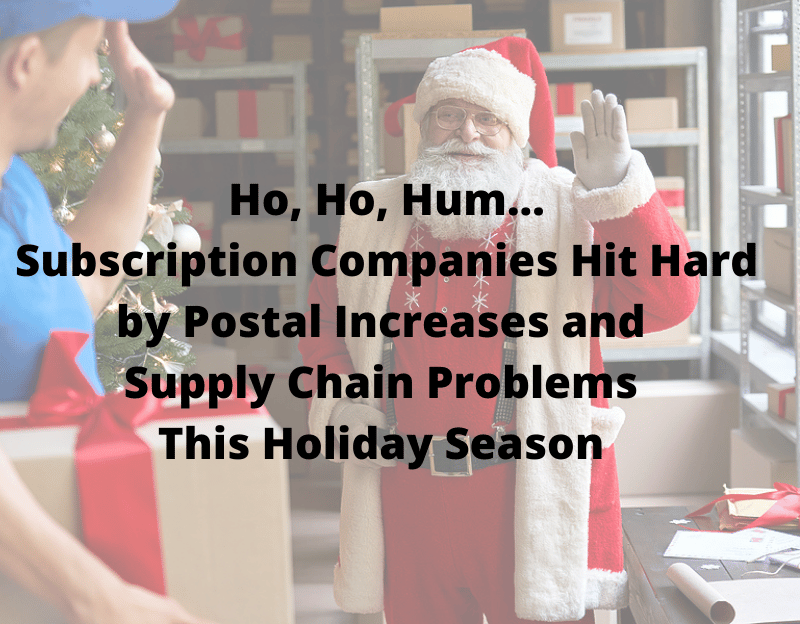


Ho, ho, hum. With increased postal rates, supply chain problems and labor shortages, not even Santa and his sleigh can ease the holiday stress for subscription companies this year. These pricing and operational issues impact everything from subscription boxes and periodicals to subscribe-and-save auto-refill services. In this members-only article, we’ll break down the issues and share examples of how some companies are handling these issues during the holiday season amidst a pandemic. Peak-seaso...
Want access to premium member-only content like this article? Plus, conference discounts and other benefits? We deliver the information you need, for improved decision-making, skills, and subscription business profitability. Check out these membership options!
Learn more about Subscription Insider PRO memberships!
Already a Subscription Insider PRO Member?
Please Log-In Here!
Get unlimited access to info, strategy, how-to content, trends, training webinars, and 10 years of archives on growing a profitable subscription business. We cover the unique aspects of running a subscription business including compliance, payments, marketing, retention, market strategy and even choosing the right tech.
Already a Subscription Insider member?
Interested in a team license? For up to 5 team members, order here.
Need more seats? Please contact us here.